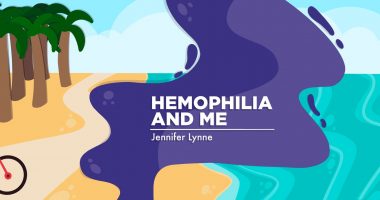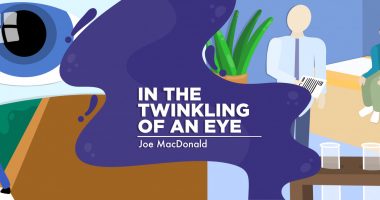Gratitude on the Hemophilia Journey

Living with hemophilia is challenging for anyone. It can be even more difficult for women who struggle to obtain a diagnosis and treatment. Despite the struggles, I am thankful for many things.
A missed diagnosis
I am thankful that the hospital lab made an error when my factor levels were first tested when I was about 8. My levels were recorded as being above 80 percent like my sister’s. As hard as it was to have unrecognized and untreated bleeds growing up, this error protected me. I was not exposed to HIV and hepatitis from factor products during the 1980s.
My blood sisters
Throughout my journey, I have leaned on my blood sisters for guidance. They have shown me the path they walked to navigate our healthcare system. The guidance of these amazing women helped my healthcare access evolve. I am very grateful.
An HTC social worker
When I was in graduate school, I had my factor levels tested. I am not sure why. They came back lower than 80 percent, but high enough that it was not yet recognized as hemophilia in a woman.
A social worker from the local hemophilia treatment center reached out to tell me about a community of women with bleeding disorders. She also told me that I should keep in mind that I could need factor in an emergency or with surgery. While I went on to have two surgeries without factor (and slow healing as a result), I am thankful for the seed of knowledge that was planted.
Diagnosis abroad
I spent several years working in international schools in Israel. While there, I had a spontaneous bleed. It started as a bruise the size of a quarter on my calf. Within three days it spread to my entire calf. This motivated me to connect with the National Hemophilia Center at Sheba in Israel.
The doctor tested my factor levels and found them significantly lower than I had understood. He was the first doctor to say I had hemophilia. It took another 10 years for my doctors in the United States to catch up with the terminology, but his knowledge and acknowledgement of my disease helped me immensely. He made sure I had my own supply of recombinant factor for emergency situations.
Evolving hemophilia treatment centers
When I returned home after years abroad, I reconnected with a few different hemophilia treatment centers (HTCs). These centers helped me learn about treatment for hemophilia and develop an appropriate plan. Five years after I returned to the United States, I was working with an amazing HTC that created a proactive treatment plan.
Genetic understandings
I am thankful I was able to participate in a study that identified my genetic mutation. This information has proven invaluable in understanding my bleeding genotype (the mutation that caused my hemophilia), and my bleeding phenotype (how my bleeding manifests in real life). The study supplied participants with reports about their mutations. The information explained why my bleeding phenotype was one that bled more than expected given my factor levels.
Hemophilia organizations
I have attended numerous women’s retreats and two national women’s conferences on hemophilia. These gatherings have been a key opportunity to disseminate health information to women with hemophilia. The conferences educated and empowered me. They armed me with the knowledge necessary to advocate for appropriate treatment.
My family
There are six traceable generations of hemophilia in my family. I admire the strength and courage of relatives who have gone before me. They have helped me understand how fulfilling life can be, even when struggling with a bleeding disorder. My family members are my examples and my heroes. Our blood bonds are strong.
Online support
I connect online daily with my blood sisters and blood brothers. It is a beautiful community. We share knowledge and provide a listening ear. Friendships are formed across the globe. We have learned that hemophilia transcends all countries, religions, and races. It is an equalizer that brings us together. We are strong.
I do not take the copious support for granted. I feel honored to be connected with so many amazing individuals and organizations who have my back. When I pause to remember this, hemophilia seems less overwhelming. I am able to honor the many small miracles and blessings I have encountered on this journey.
***
Note: Hemophilia News Today is strictly a news and information website about the disease. It does not provide medical advice, diagnosis, or treatment. This content is not intended to be a substitute for professional medical advice, diagnosis, or treatment. Always seek the advice of your physician or another qualified health provider with any questions you may have regarding a medical condition. Never disregard professional medical advice or delay in seeking it because of something you have read on this website. The opinions expressed in this column are not those of Hemophilia News Today or its parent company, BioNews Services, and are intended to spark discussion about issues pertaining to hemophilia.







Comments
Carol K. Kasper, M.D.
We should be grateful for the financial support of our communities. When I first treated a person with hemophilia, in 1962, most such persons were impoverished by the cost of repeated hospitalization and, in some cities, fees for plasma. Hemophilia was a pre-existing condition so adults couldn't get insurance in their own names. Various government programs and actions have eased the financial burden on individuals and their families and spread it to the entire community of tax-paying citizens.
Shellye Horowitz
Thank you, Dr. Kasper, for bringing to our attention this very important point. This is, indeed, something our community must have gratitude for. We have come a long way and some of us too often take our access to safe, affordable treatments for granted.